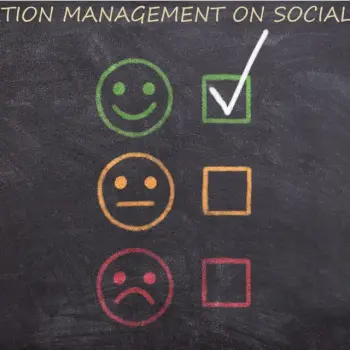The goal of Te-Li Lau’s Defending Shame is to explore Paul’s use of shame for the sake of moral formation. Specifically, Paul uses “retrospective shame” (ch. 4) and “prospective shame” (ch. 5) in an effort to bring about “Christic formation.” Lau’s survey of Paul is rich with insight. This post only highlights just a few of my favorite takeaways.
(This is the third in a series looking at Lau’s Defending Defending Shame: Its Formative Power in Paul’s Letters. Check out Part 1 and Part 2)
Paul’s Use of Retrospective Shame
Retrospective shame is the “kind of shame that is consequent upon having done bad acts (either in the past or present)” (26). To see how Paul uses this type of shame, Lau examines Galatians and 1 Corinthians.
Lau begins with Galatians. He not only looks at Paul’s confrontation with Peter; Lau also considers more subtle aspects of Paul’s approach, including the structure of the letter, Paul’s portrayal of the Galatian addressees, and his portrayal of the agitators against whom Paul writes.

Lau identifies several key characteristics that mark Paul’s shaming tactics. First, he does not merely berate his readers; he gives thoughtful reasons to buttress his rebuff. Second, Lau notes, “Effective shaming rebuke also requires solid ethos or unimpeachable character on the part of the speaker” (104). Paul highlights his own character and efforts as “a foil demonstrating the shameful character of the agitators” (104).
Third, “Like a skillful doctor, Paul balances his shaming refutation with gentle words so that the bitter pill of correction is more easily swallowed” (104). This approach leads to a fourth feature of Paul’s shaming in Galatians. His purpose or goal in shaming is to “engage them in the core of their being” in order to “transform the mind” (104–105). They must know that “within the divine court of opinion, the Galatians are shameworthy” (106).
Lau summarizes,
“Paul uses shame as a tool to transform the mind so that it is capable of self-evaluation, but the ultimate goal of Paul’s shaming refutation is to transform the perspective of the Galatians so that their identity and behavior are firmly rooted in the crucified Messiah.” (106)
For this reason, Paul pivots from his extended rebuke in Galatians 1:6–4:11 and urges them to “become like me” (Gal 4:12).
When Lau turns our eyes to 1 Corinthians, we find many other insights for wisdom. Lau’s careful attention to detail enables him to discern subtle ways that Paul uses vocabulary to achieve different effects. In waking the Corinthians from their complacency, “Paul moves past the superficial task of behavior modification to value transformation” (120). Lau has a lot more to say about 1 Corinthians, but space prevents me from delving deeply here.
Paul’s Use of Prospective Shame
Prospective shame is a kind of shame that “looks to the future and restrains one from pursuing bad acts” (26). To understand how Paul uses shame in this way, he looks to Philippians and Philemon.
According to Lau, “Paul uses honor and shame categories in Philippians to cultivate a dispositional sense of shame in his readers” (123). He wants to shape their conscience so that they can persevere in the faith and resist temptation and fruitless disputes. For the church, the cross and humility no longer are “social markers of shame”; they are “nullified and transformed in God’s economy” for the sake of glory (128).
Paul points to Christ and others as moral exemplars, who can guide them forwarded to true honor. Christ is the new standard that must shape one’s conscience.
Paul’s use of honor and shame in Philemon is breathtaking. He keenly alternates between the roles of superior and inferior. Paul ensures that Philemon grasps the way Christ transform our identity and thus his relationship to Onesimus. Lau astutely points out that the letter to Philemon actually is a public letter, a detail I had long overlooked.
The Place of Shame in Paul
Prospective shame is not independent of retrospective shame; rather, they are intertwined. In Lau’s study, this point becomes increasing evident. It is also quite useful. Lau states,
“Paul may engage in specific acts of shaming so as to evoke the occurrent experience of shame not for a past or present transgression but for a potential bad act in the future. He brings about the experience of prospective shame to forestall the performance of bad acts” (p. 158).
The experience of shame does not that cause a pain rather than pleasure response. It reflects and modulates one’s values. It moves our morality.
Paul understands that “Virtue is not just doing virtuous things but doing virtuous things virtuously” (p. 162). Accordingly, shaming acts are not punitive for punishment’s sake; they aim at restoration. In fact, Lau observes that the converse can be true, as when Israel finally felt shame once they were restored. This form of shame is healthy and healing for those who suffer from shamelessness.
Read It Twice and Read It Together
Here is my advice if you get this book. Read it twice. And read it together. The reason is that it is dense. The second time through, you will want to sketch outline and practical takeaways that can be used in your life and ministry.
Paul’s demonstrate a healthy way of using shame as a way of honoring people. In order to internalize such insights, we need time and opportunity to process with others.
If you are interested, here’s an excerpt of Defending Shame. Enjoy!












